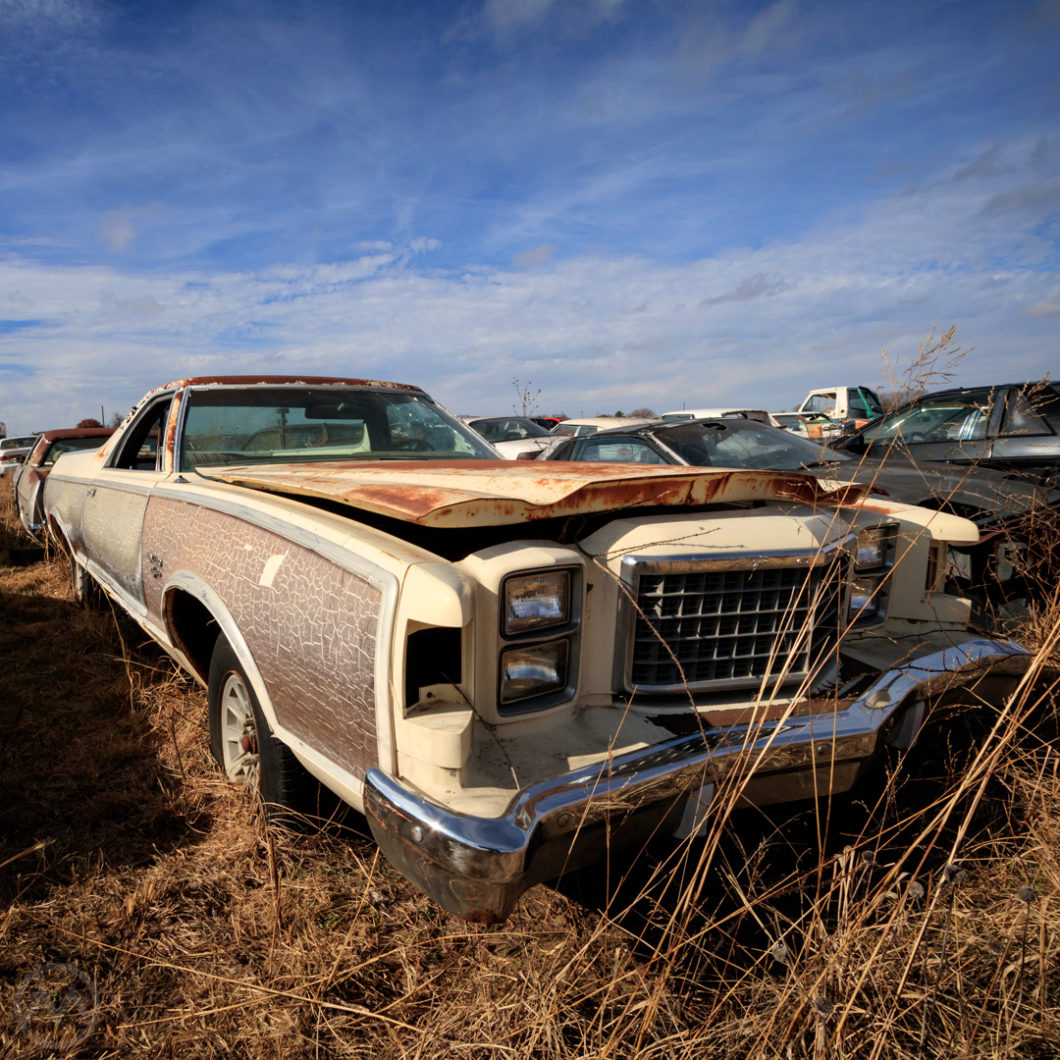Ford’s Ranchero was the first modern North American “coupe utility,” but it never sold as well as anticipated – rarely more than 23K units a year through its early variations until it was tied to the Torino in 1968. When the Torino was redesigned in 1972, so was the Ranchero – and its time had finally come.
The Ranchero’s best ever year was 1973 with more than 46,000 units sold; despite the fact that it was besieged by more competitors than ever before – Japanese mini trucks nipped from below, SUV’s like the Bronco/Blazer and ever-flashier big pickups above.
But the market wanted lifestyle cars and the Ranchero’s muscular restyle blended coupe, muscle car, and rugged truck imagery together. The overall appeal of U.S. “utes” might be limited, but in 1972-74 the Ranchero was exactly right for the buyer.
Rancheros were still marketed as utility vehicles then and started with a basic 250-cid six, but few buyers were interested in that kind of Ranchero by 1974. The action was on flashy muscle car versions with big engines – which were hit hard by the fuel crisis – 1975’s sales dipped back down to ~16,400 units.
The woodgrained Squire
All through this era, the Ranchero came in three flavors – the regular 500, the sporty GT, and the wood-paneled Squire; the last emphasizing utility and luxury and patterned on Ford’s “Country Squire” wagons.
The Squire look was conservative. It had briefly made the truck an insurance-rate Q-car, packing the same punch as the the GT but in a more actuarily-acceptable package, but that was all over by 1974 and it’s lack of visual muscle (by 1976 the Ranchero, even with a 460, wasn’t all that fast) made it the least popular version of the extroverted Rancheros in this era.
Always rare-ish, Squire sales nosedived in 1975 and never recovered, but the woodgrain truck was offered all the way through to the end of the model.
When the Torino was reskinned into the LTD II in 1977, the Ranchero went along.
Underneath, there wasn’t much difference from the ’76, but the fresh look – tied to the LTD II and Thunderbird – gave the truck a decent sales boost – particularly on the GT (which mostly offered the appearance of speed, these were big and heavy cruisers).
A 302 base V8, with 351s and 400s optional, powered the cars. In each of the 7th-gen Ranchero’s years (1977-1979), it sold over 23,000 units – the GT being the volume leader.
The Squire, meanwhile, virtually disappeared. In 1978, just 908 were made, in 1979, only 758. This is one of those very last Squires, seen at Browne Auto Salvage. The striped GT, again, was where the action was for Ranchero customers.
The end comes for the Ranchero
Even with the sales boost from the LTD II redesign, the Torino platform was an old one and the Ranchero a pricey model to replace with it’s low volumes.
When factoring in the cost of tooling up for a new body, the prospect of yielding yet another 23,000-unit seller probably didn’t look too attractive. With many more buyers interested in the Mazda-based Courier, the Ranchero was dropped at the end of 1979.
Ford briefly experimented with National Coach Works on a Fairmont-based replacement, the Durango. The Durango was beautifully executed and the Fairmont Futura’s roofline uniquely adaptable to building a related Ranchero.
But by the time of the Durango Ford was already gearing up to produce the Ranger, which effectively replaced the Courier and the Ranchero in 1982. Thus the Durango became a one-year-only phenomenon.
This rough but restorable Ranchero was seen at the excellent Browne Auto Salvage.

